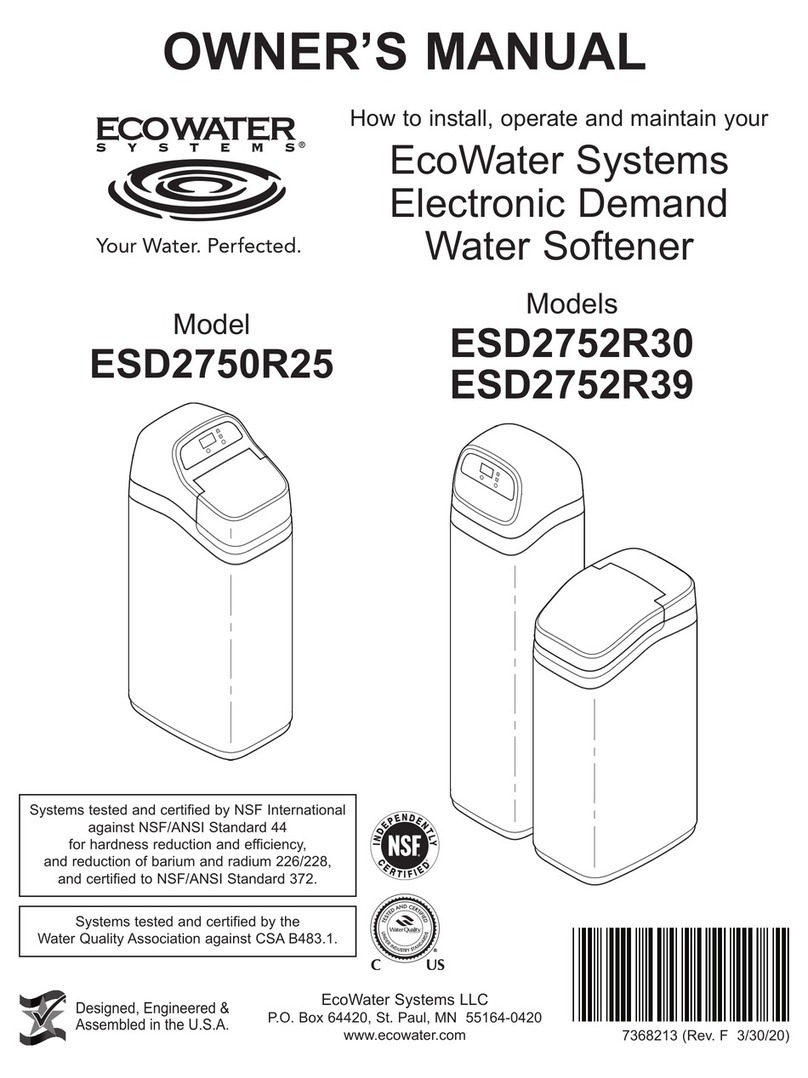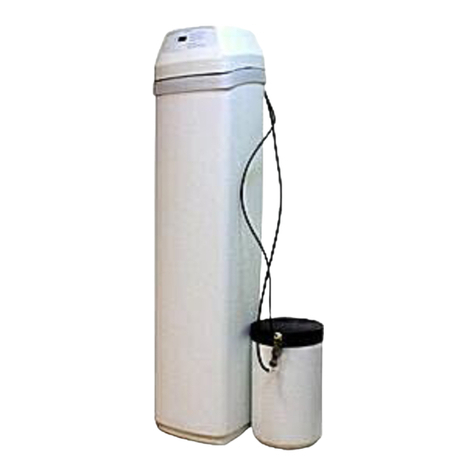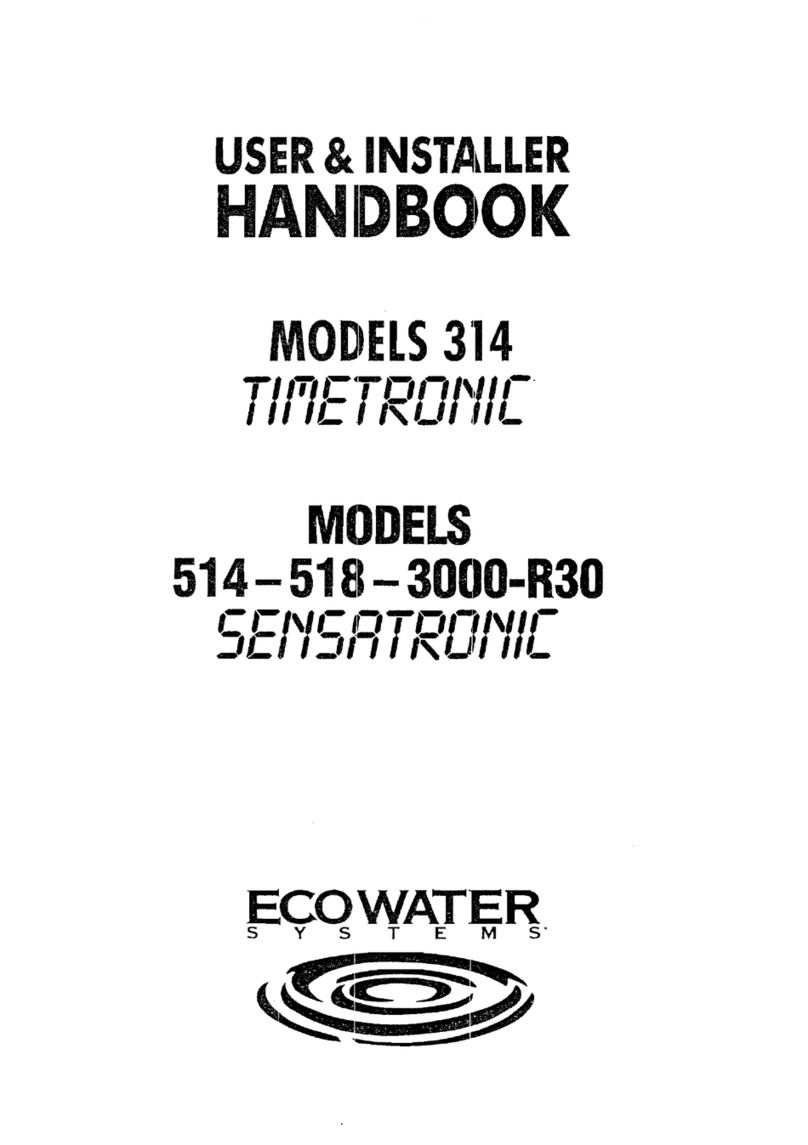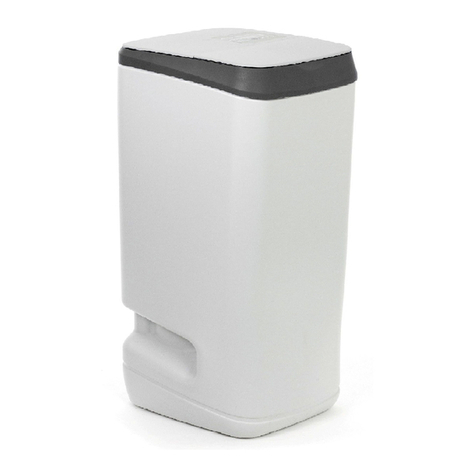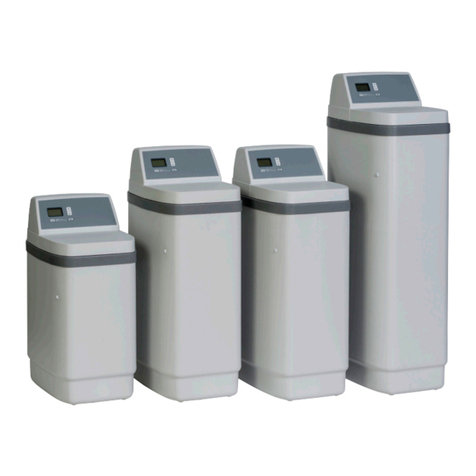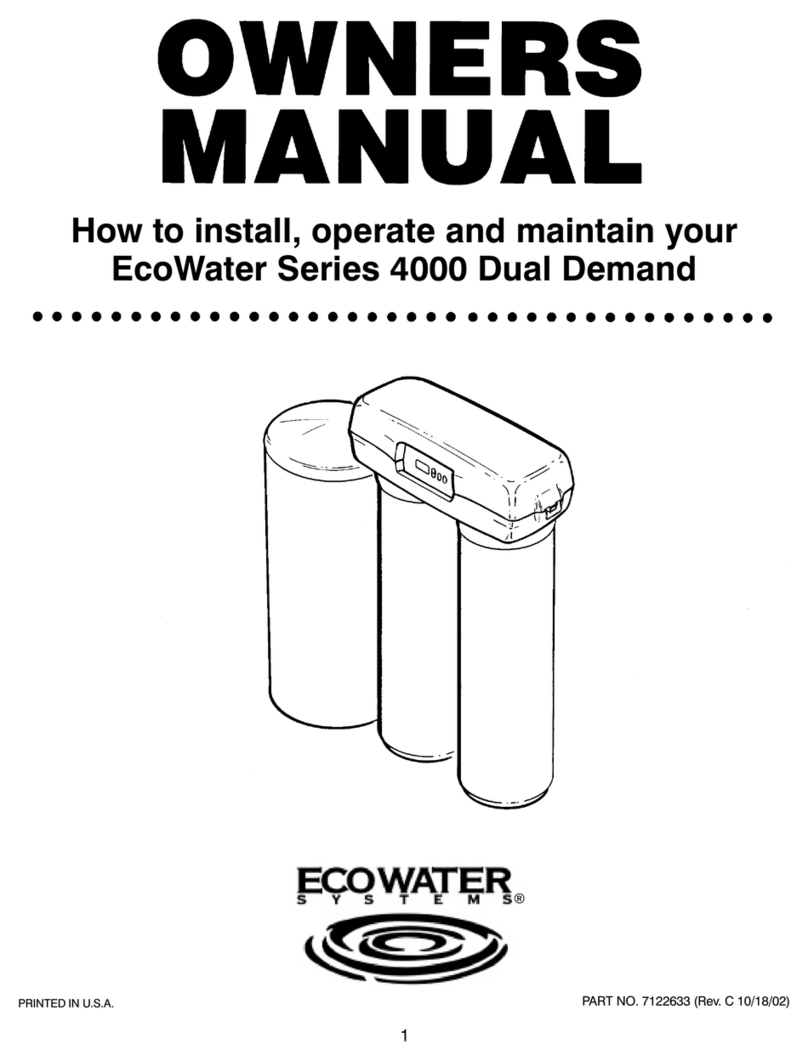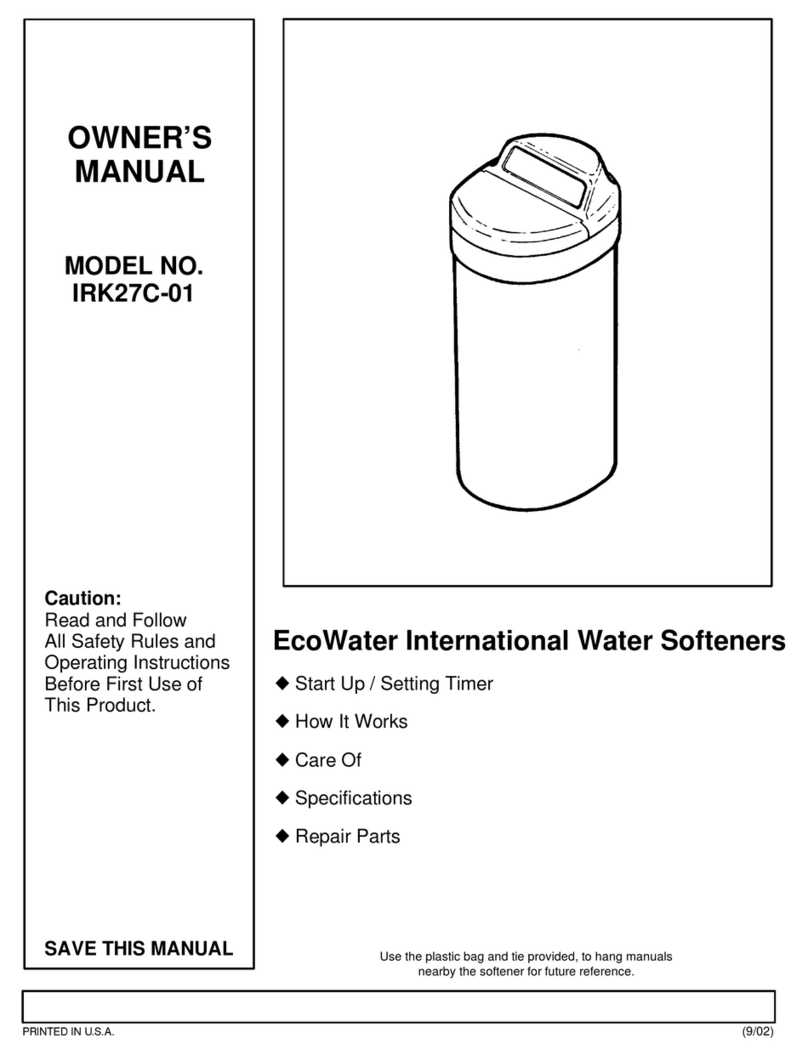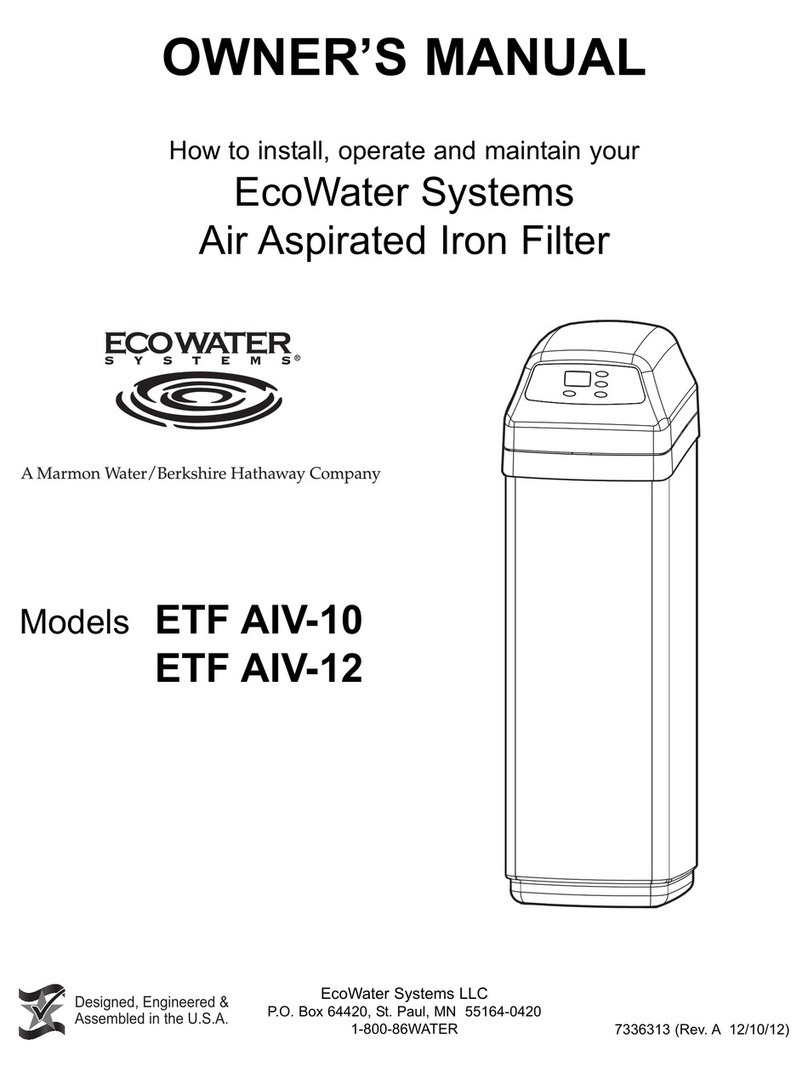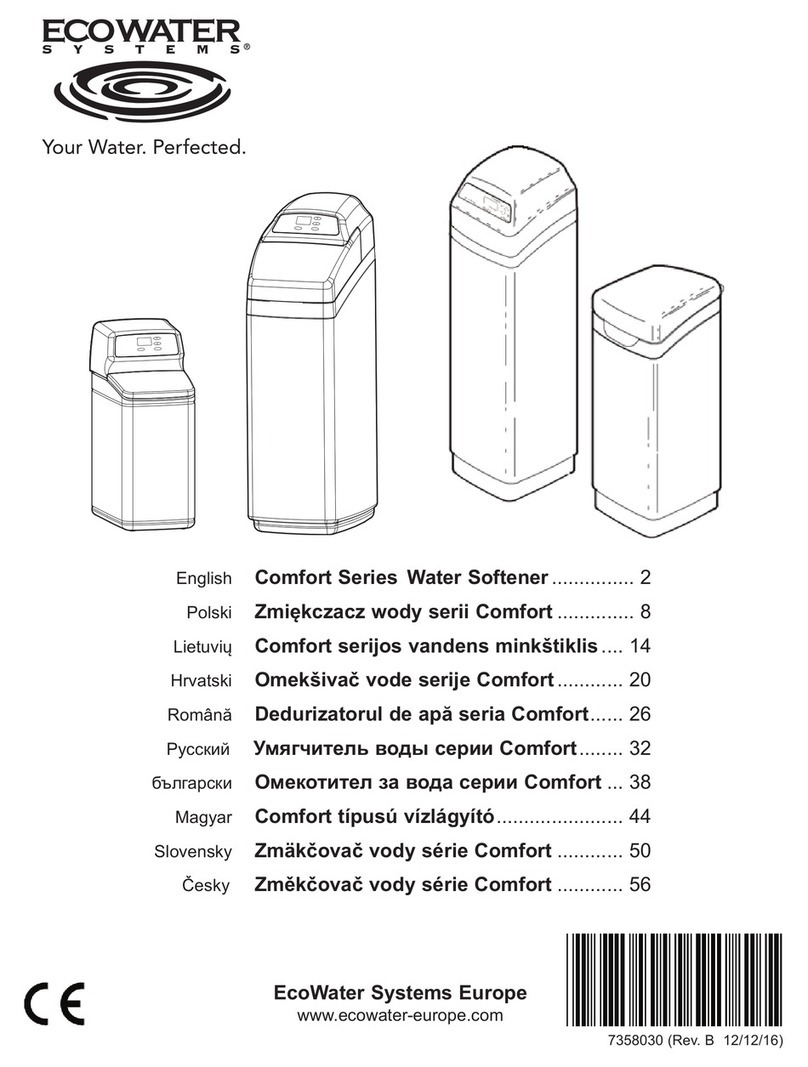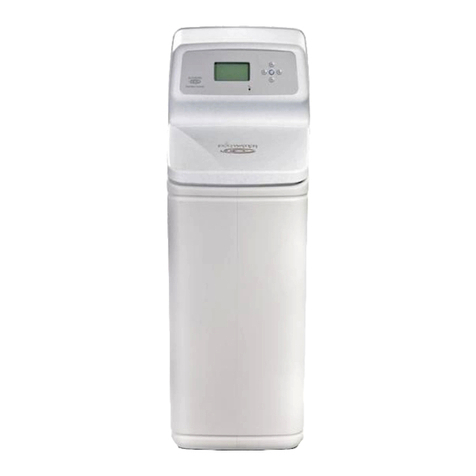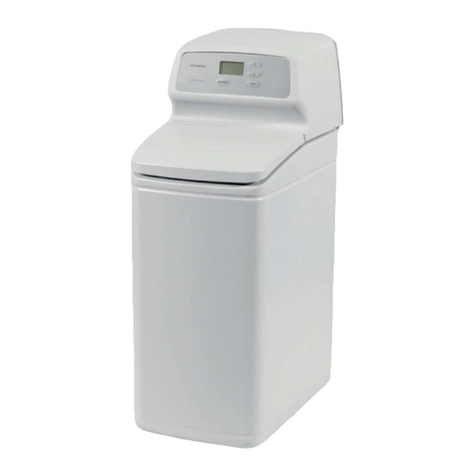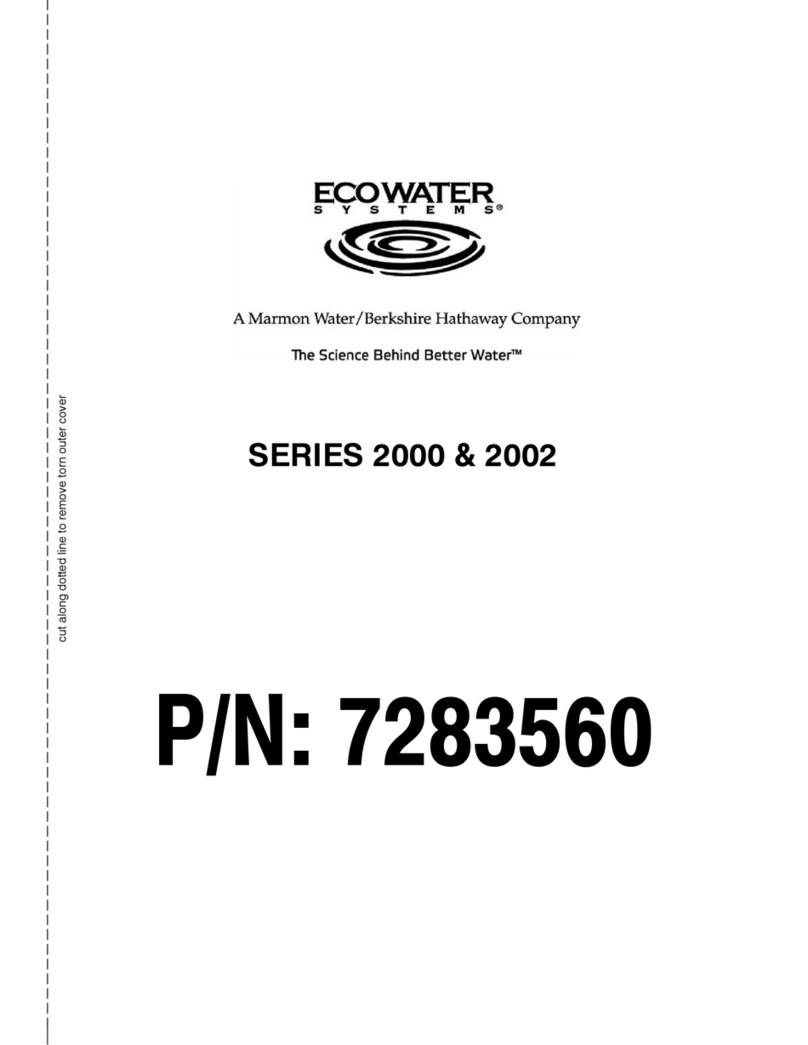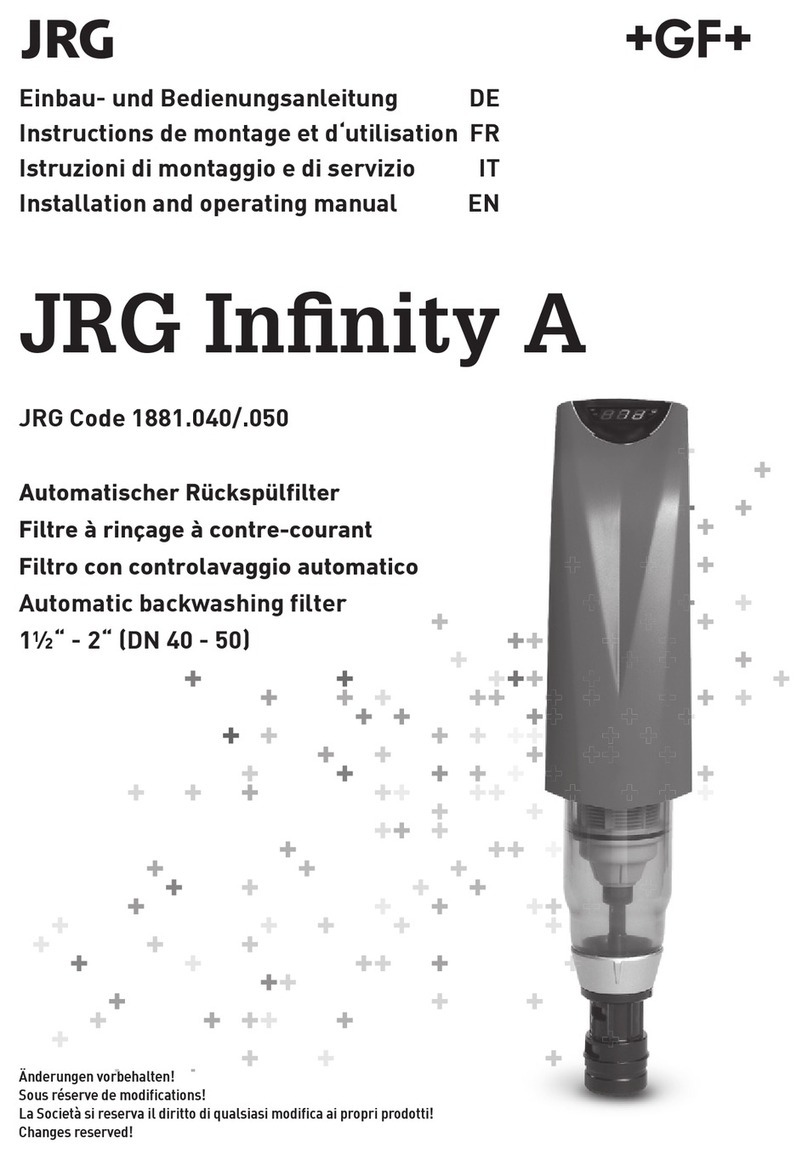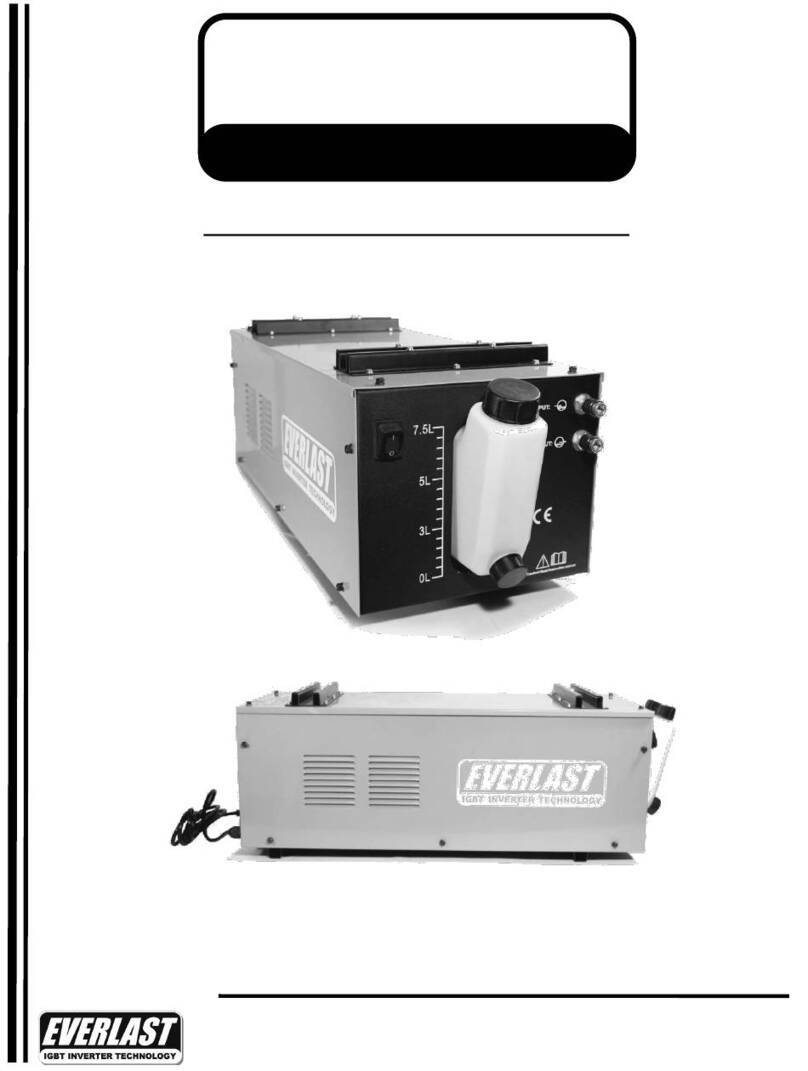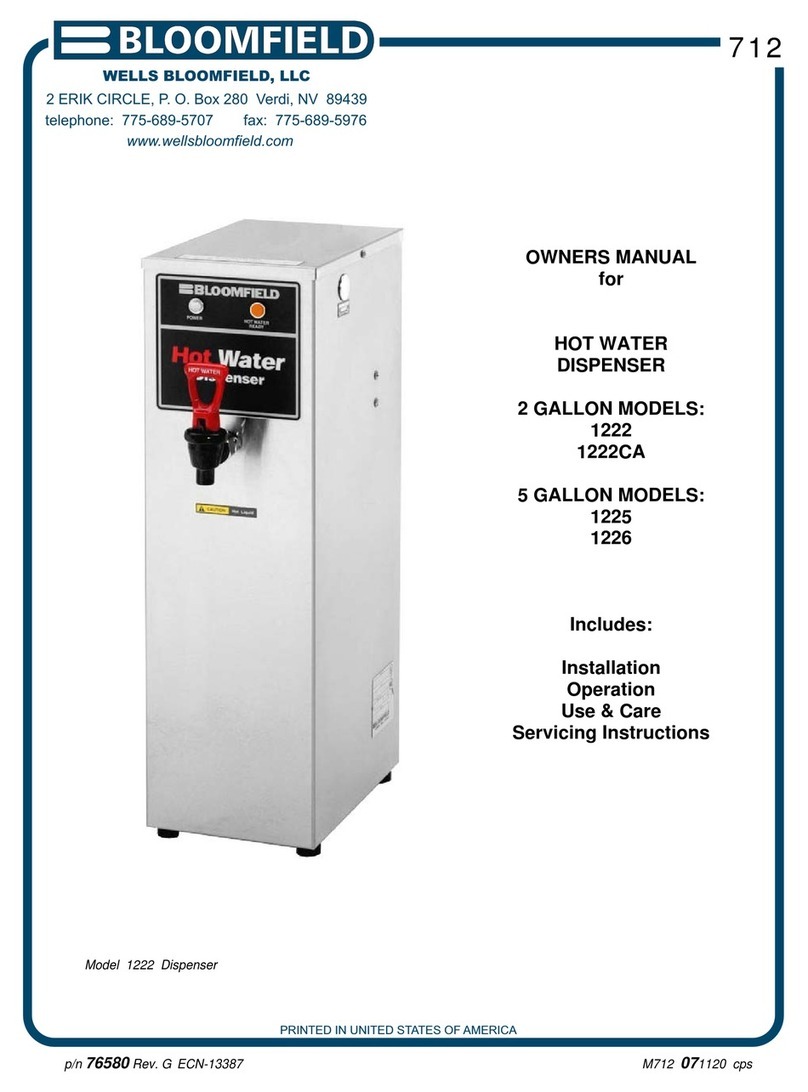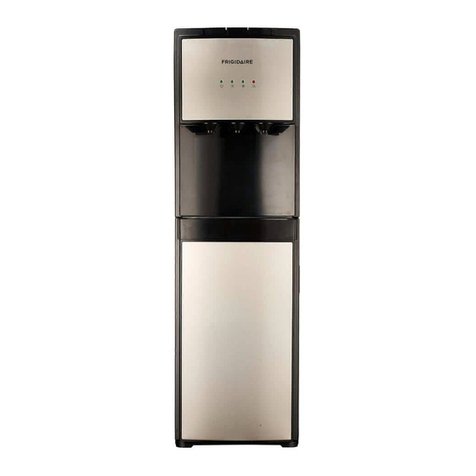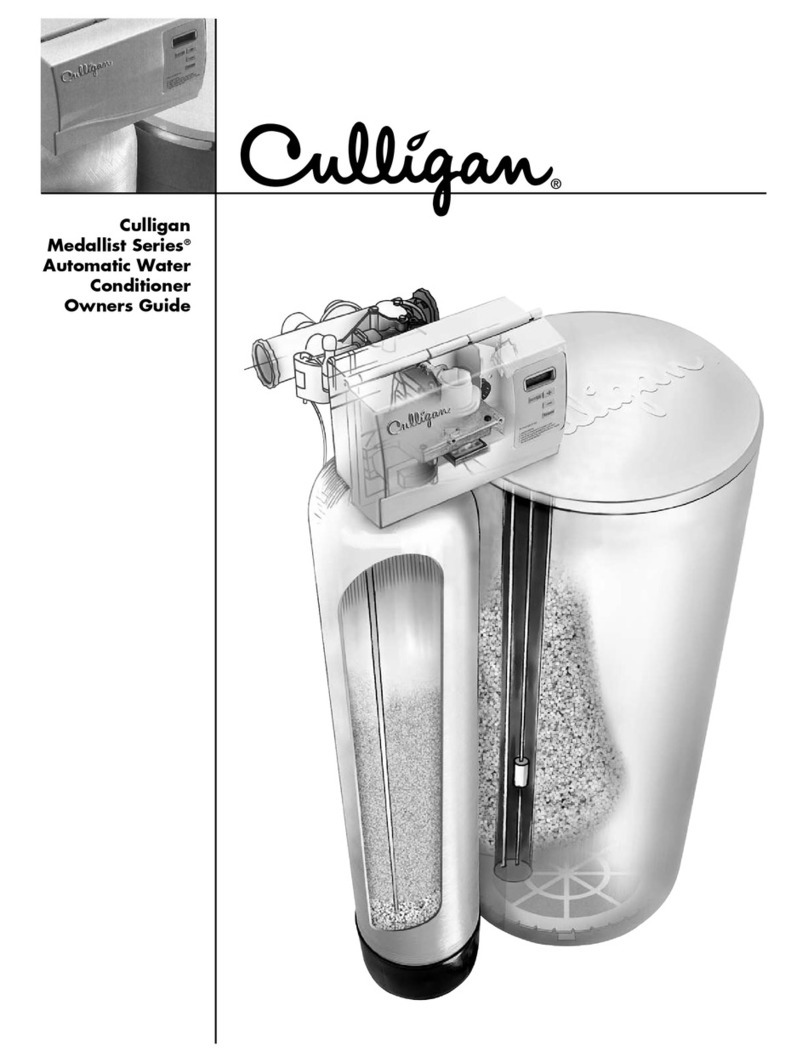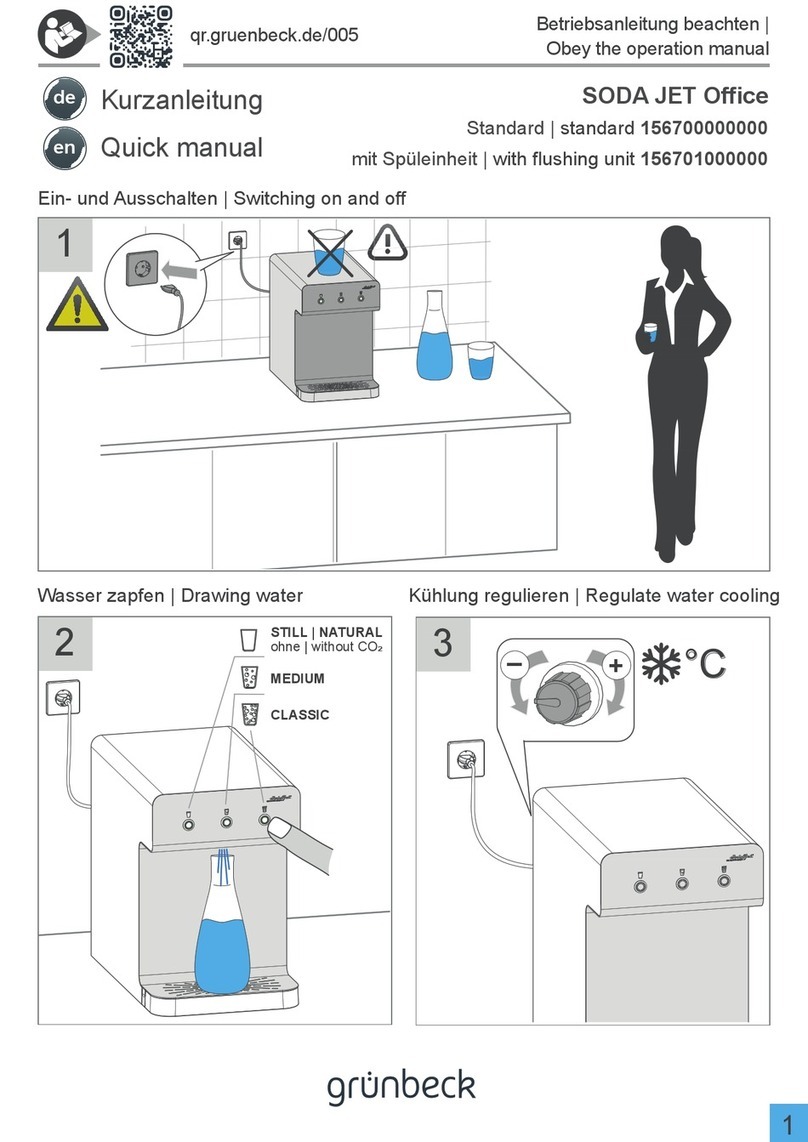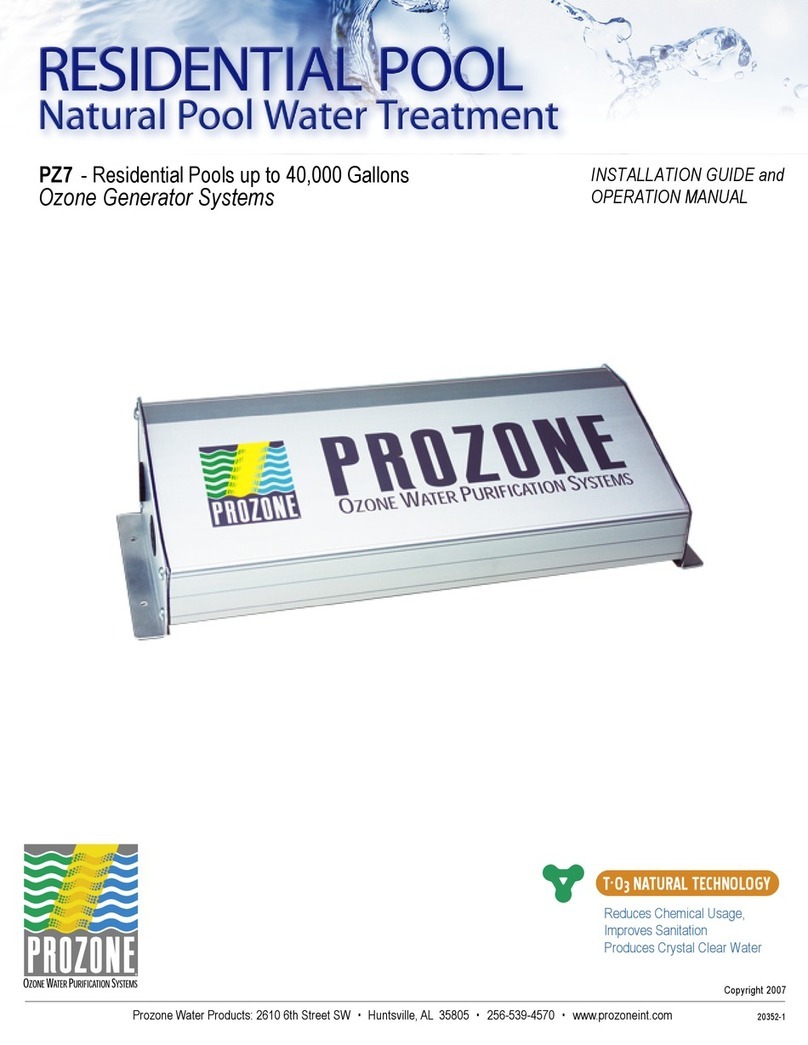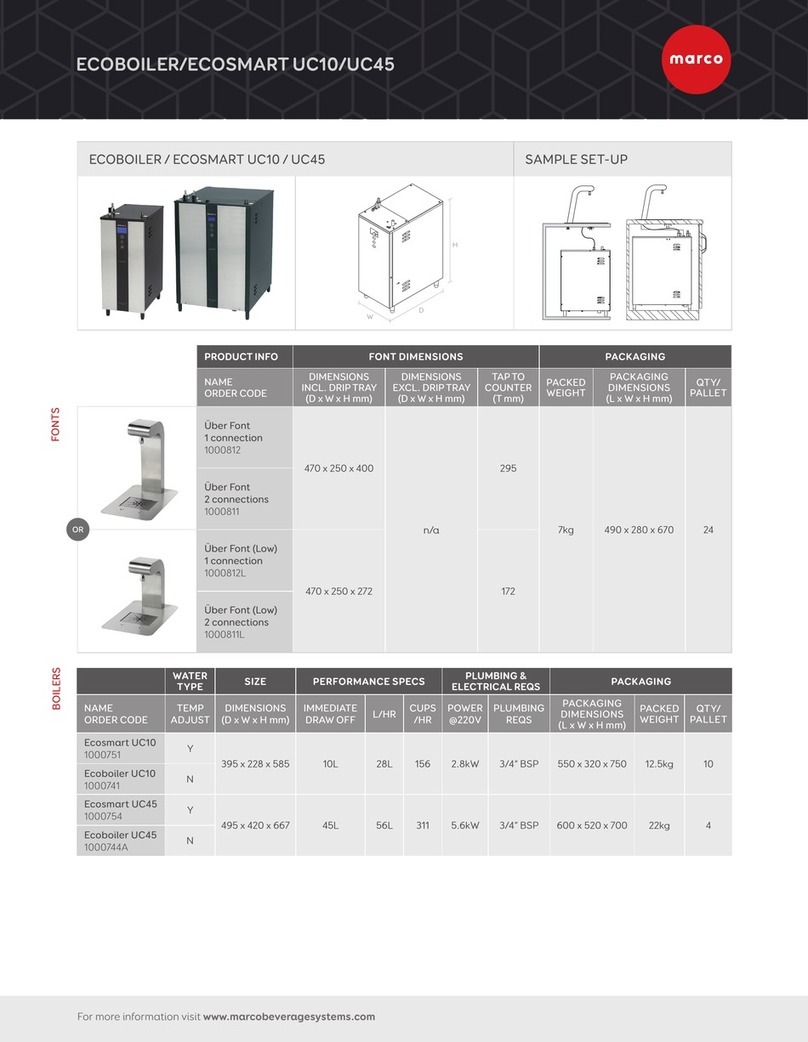
ECOWATER
SYSTEMS Water, and Water Conditioning
4
WATER
Man’sveryexistencedependsonwater.Itis1ofthe
basic commodities of life. Water is best as nature
provides it, is a common misconception. Practically
all natural water needs refinement or treatment to
make it safe to drink or more satisfactory to use.
The earth’s water supply cycle starts in the upper
cloud layers. As it falls to the earth as rain or snow,
it picks up impurities and gases from the atmo-
sphere. Landingon earth,it seepsover andthrough
the ground, dissolving earth minerals. Passing
through limestone, it dissolvescalcium and magne-
sium, the hardness minerals. Iron deposits impart
iron to the water. Acidity and sediments are other
water conditions.
Municipal water supplies come from surface reser-
voirs, suchas lakesand rivers,or fromunderground
reservoirs.Usually,municipalitieschlorinatethewa-
ter to make it safe to drink. Sediment is removed by
filtration. Tastes and odors are reduced or elimi-
nated. The water is conditioned to comply with cer-
tain specifications. However, hardness minerals,
tastesandodorsarenotalwaysreducedto themost
desirable levels.
Underground reservoirs provide our private water
supplies. Because the water is raw and untreated, it
can have varying amounts ofhardness, iron,tastes,
odors,acidity,orcombinationsof these.Differentlo-
calities and water levels affect mineral content.
WATER CONDITIONING
Water conditioning is the treatment of four general
conditions. These are: (1) +DUGQHVV,(2),URQ,(3)
$FLGLW\,(4)6HGLPHQWV.
(1) +$5'1(66 is a term to describe the presence
of calcium and magnesium minerals in water. A
chemical analysis accuratelymeasures the amount
of minerals in grain weight.For example,1 gallonof
water with 5 grains per gallon (gpg) hardness has
dissolved minerals, that if solidified, about equals
thesizeof1ordinaryaspirintablet.Onegallonofwa-
ter, 25 gpg hard, hasa mineralcontent equal in size
to 5 aspirin tablets. Water hardness varies greatly
across the country. It generally contains from 3 to
100 gpg.
Hardwateraffectslivingingeneral.Hardnessminer-
als combine with soap to make a soap curd. The
curd greatly reduces the cleaning action of soap.
Precipitated hardness minerals form a crust on
cooking utensils, appliances,and plumbingfixtures.
Even the tastes of foods are affected. A water soft-
ener removes the hardness minerals to eliminate
these problems, and others. Pages 16-17 describe
how the EcoWater conditioner works.
Sodium Information: Water softeners using sodium
chloride (salt) for regeneration add sodium to the
water. Persons on sodium restricted diets should
considertheaddedsodiumaspartoftheiroverallin-
take.
(2) ,521 in water is measured in parts per million
(ppm). The total* ppm of iron, and type or types*, is
determined by chemical analysis. Four different
types of iron in water are: ❶Ferrous (clear water),
❷Ferric (red water), ❸Bacterial and organically
boundiron,❹Colloidalandinorganicallyboundiron
(ferrous or ferric).
*Water may contain one or more of the four types of
iron and any combination of these. Total iron is the
sum of the contents.
❶Ferrous(clearwater)ironissolubleanddissolves
in water. It is usually detected by taking a sample of
waterinaclearbottleorglass.Immediatelyaftertak-
ing,thesampleisclear.Asthewatersamplestands,
it gradually clouds and turnsslightlyyellow orbrown
as air oxidizes the iron. This usually occurs in 15 to
30 minutes. An EcoWater conditioner will remove
moderateamountsofthistypeofiron(seespecifica-
tions).
❷Ferric(redwater),and ❸Bacterialandorganically
boundironsareinsoluble.Thisironisvisibleimmedi-
ately when drawn from a faucet because it has oxi-
dized beforereaching thehome. Itappearsas small
cloudy yellow, orange, or reddish suspended par-
ticles. Afterthe water stands fora period of time, the
particlessettletothebottomofthecontainer.Gener-
ally these ironsare removed fromwater by filtration.
Chlorination is also recommended for bacterial iron.
An EcoWater conditioner will remove minimal quan-
tities (see specifications) of ferric iron.
continued




















